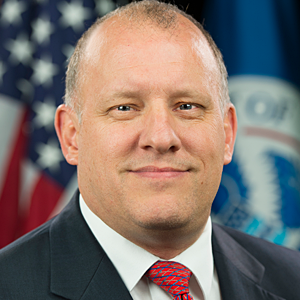Q1. Why is DISA's plan to acquire a cloud browser for its 3.1 million employees significant for the security market in general and for your market segment in particular?
When the organization that invented the Internet pursues a strategy whereby they disconnect from the underlying protocols, it's a noteworthy move. DISA has spent literally billions of dollars engaging in a rear-guard action to secure web content after it's entered their environment. They've tried end point anti-malware solutions, client-side sandboxing, deep packet analysis, gateway based filtering, and more. As the largest single network in the world, and as the most targeted network, they've spent significant resources trying to manage the web. With the adoption of a cloud browser, they get to disconnect.
Isolation is not a new strategy, but it has not been mainstream. With an organization like DISA moving in this direction for all DoD personnel, it sends a message to the industry that current course and speed isn't good enough.
Authentic8 likes this move a lot, not just for the validation of the cloud browser, but because the RFI covers a number of different use cases; everything from personal browsing for morale to restricted access to mission-critical web apps. A cloud browser can be configured to meet all these requirements. These are specific use cases that our patented browser policy framework is uniquely positioned to meet.
Q2. What are some of the factors driving the need for technologies such as yours and how do you see cloud browsers evolving over the next few years?
If I were to sell a CIO on the greatest productivity enhancement ever - giving their employees real time access to information, applications, corporate data, and more - but all they needed to do was open their firewall and allow third party code to execute on their systems, I'd get laughed out of the room. But that's exactly the way the browser works, and that's the tradeoff that every CIO, CISO, CEO or other leader has made. The inherent design of the Internet is insecure and unmanageable. But the utility of the Internet has made it indispensable in business.
The security industry has convinced the market that they need to spend more to be secure. Yet breaches continue unabated. 2017 saw records in both numbers - $90 billion spent on cyber security, yet 2.5 billion data records breached and a 167% increase in ransomware exploits. These two trend lines - dollars spent and security breaches - seem to be in lockstep. There's none of the boom-bust cycles like healthy markets have. IT is screwed.
We think that the only answer is for customers to disconnect from the web. When you factor the hard and soft costs, the risk, and the potential for reputation damage, you can't make a compelling case for the web. Organizations should disconnect. That's where the cloud browser comes in. With a cloud browser, you still get access to web content as normal, but no web code ever enters the organization. The attack surface area shifts to disposable servers out in the cloud.
In addition to the inherent security and cost benefits, cloud browsers also give organizations the management and compliance capabilities they are currently missing.
Q3. If there were one thing you would like attendees at Black Hat USA 2018 to know about Authentic8, what would it be?
Disconnect from the web. It's impossible to secure and puts your organization at risk. Use a cloud browser instead.














